You will be met in the arrivals lounge of new Delhi international Airport and transferred to your hotel where you can relax on your first day.



You have a full day. to explore the wonders of Delhi with your guide. You begin your tour with a visit to the old walled city and the massive Jama Masjid, one of the largest mosques in India. From here you can enjoy a rickshaw ride through the bustling, narrow lanes of Chandni Chowk market. This fascinating and ancient shopping centre is colourful and vibrant selling everything from wedding dresses to jewellery to pots and pans and spices - one not to be missed. A ride through Delhi takes in the Gandhi museum, the presidential estate and the huge India Gate before returning to your hotel to relax before dinner and prepare for your train ride the following day.
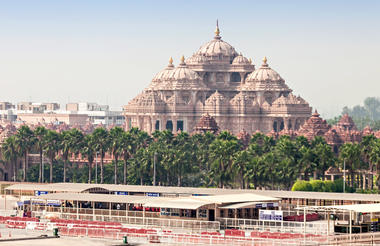

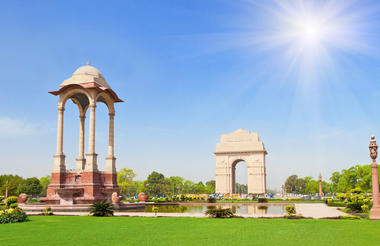
Cricket - during the month of April India goes cricket mad with the India Premier League. Watching cricket in India is truly spectacular. We can organise tickets and a guide for you with transfers to and from the game.
Tuk-Tuks - the green and yellow tuk tuks are everywhere in Delhi and a delightful way to see the city is in one of these local forms of transport. Just ask the hotel concierge to organise a tour for you and agree a price.
This morning you are free to explore the city more ( maybe by local Tuk-Tuk? ) or simply relax before your train journey to Ranthambore this afternoon.
Your guide will pick you up in good time to take you to the train station to board the 13.15 "Jan Shtabdi Special" to Ranthambore, arriving at 18.03 and will accompany you on the journey.
Upon arrival at Ranthambore you will be transferred to the magnificent Nahargarh Heritage Hotel - your base for your time at Ranthambore.
Ranthambhore Tiger Reserve, at the junction of the Aravalis and the Vindhyas, is a unique example of natural and historical richness, standing out conspicuously in the vast, arid and denuded tract of eastern Rajasthan.
Ranthambore is perhaps one of the best places in the world to see a tiger in the wild.
The Reserve has diverse topography ranging from flat topped hills to rugged outcrops, from wide valleys to narrow rocky gorges.



Train Journeys in India - taking the train in India is a wonderful way to enjoy the country and cut out long driving days. Outside, the whole of Indian society seems to pass by and often wildlife can be seen in the fields as you get out of the city. Your seats in the air conditioned carriage are very comfortable and will be reserved in advance for you and you'll find that refreshments are available throughout your journey.
Today you can enjoy morning and afternoon game drives in Ranthambore National Park and your first taste of tiger country.
The park contains a huge variety of mammals, birds and reptiles as well as its more famous residents. Sloth bears are often seen here along with chital deer and Nilgai or blue bull, the largest Asian antelope.
You return to your hotel after tiger tracking by 10am for a well deserved breakfast before having the opportunity to relax and enjoy the pool / spa and other facilities.
Following lunch you leave again for your afternoon safari in search of the ever elusive tiger.
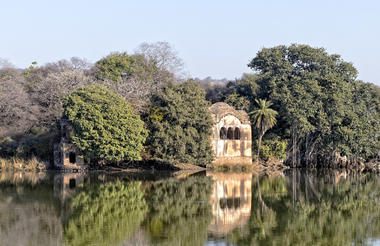

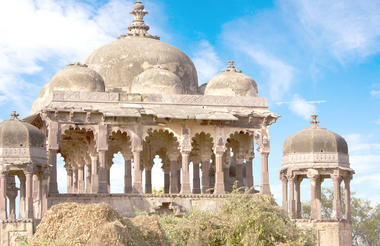
Ranthambore National Park - to minimise overcrowding at tiger sightings in this popular reserve the rangers have zoned the park into 10 different sections which ensures only 10 vehicles at any one time can be in any one zone. This really helps enhance the experience of seeing these magnificent animals.
This morning you can enjoy a morning game drive in Ranthambore National Park before
returning to the hotel.
Time to relax once more or you can visit the local area including villages, schools or the temple on top of the fort.
Alternatively the hotel gardens are full of exotic birds and plant life for you to enjoy and photograph.

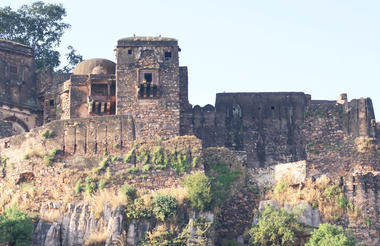
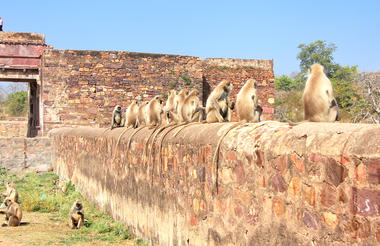
Birdlife - often the best place to enjoy some of India's beautiful bird species is in the grounds of your lodge/hotel. With lush lawns, exotic plants and plentiful water the birds see hotel grounds as oases
This morning we drive to Agra. En route we visit Abhaneri and will walk around the amazing Chand Baori.
Built in the 10th century, this incredible step well was a practical solution to the water problem in the area.
A hot lunch will be provided en route for you.
Agra, previously served for many years as the capital of the vast Mughal Empire. The city resides in India's famed Golden Triangle, and draws tourists to the Taj Mahal and other historic sites that reflect Agra’s rich history.
In the evening, visit Mehtab Bagh to get a stunning view of the Taj from across the Yamuna River.



Step wells - India is famed for its step wells and the remarkable one at Chand Baori was built in the 10th century. These wells are a fascinating and practical way to solve water shortages and are architecturally spectacular
Today you can explore the two famous landmarks of Agra.
Early this morning we will arrive at the Taj as soon as we are able to witness the beauty of this monument at sunrise.
The Mughal ruler Shah Jahan dedicated this stunning building to his beloved wife Mumtaz Mahal. Widely accepted as one of the greatest architectural works of all time, the Taj Mahal is an eternal symbol of love and inspiration..
The Agra Fort was once the home of the Mughal Emporers during Agra's era as capital.
This evening you have the opportunity of visiting a local home for a cooking demonstration and dinner



Taj Mahal - this stunning monument is worth visiting at both sunrise and sunset and is still exceptionally beautiful throughout the day. The size of the structure surprises everyone and the perfect symmetry of the architecture adds a sense of peace for all who visit.
You take your second train journey today from Agra to Jhansi on the Gatimann Express arriving at 12.35.
From here it is a short drive to Khajuraho, India's most titillating town which is famed far and wide for the erotic stone carvings that swathe three World Heritage–listed temples. The Western Group of temples, in particular contains some stunning sculptures that together make up some of the finest temple art in the world.
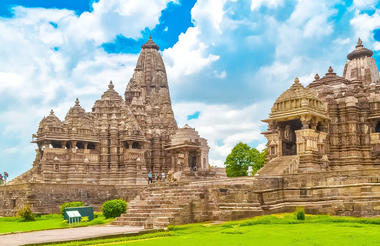
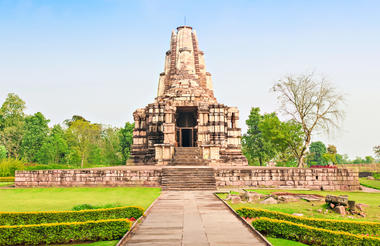
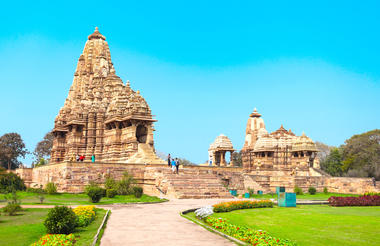
Khajuraho Temples - the temples are full of erotic sculptures and symbols of love and there are many theories of why the walls are adorned with these images.
You leave Khajuraho this morning and drive to Bandhavgarh National Park (250km) and check in at your lodge.
Situated in the central Indian state of Madhya Pradesh, Bandhavgarh National Park is a 448 km2 renowned tiger reserve. Nestled among the picturesque Vindhya and Satpura ranges, this is one of India's most beautiful national parks. The dramatic landscape features tropical forests and woodlands, and steep rocky hills with flat grasslands in the valleys below.
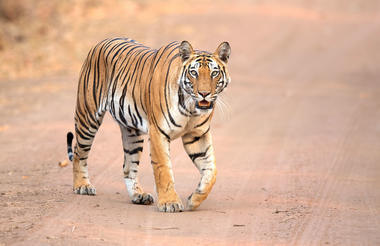


Vehicle Transfers in India - your drive today will be through rural areas of agricultural villages and landscapes which are interesting in their own right and gives you the opportunity to observe the daily lives of many Indian people
Today your highlights are morning and afternoon game drives in Bandhavgarh National Park.
Bandhavgarh supports one of the highest densities of tigers on the Subcontinent. Its hilly open terrain includes many large grassland meadows that offer good chances of sightings. The density of its big cat population has made Bandhavgarh world famous. The Park is also home to a large variety of mammals: leopard, chital (spotted deer), Sambar deer, nilgai, wild boar, chinkara, sloth bear, rhesus macaque, grey langur, jungle cat, hyena, porcupine, jackal, fox, and wild dog.Your stay includes morning and afternoon game drives in Bandhavgarh National Park.


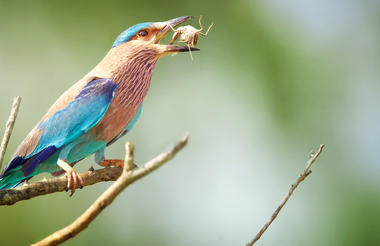
Bandhavgarh National Park - a beautiful park with a high density of species including tigers, leopards and the Indian Wild Dog or Dhole. This illusive canine is considered one of the rarer sightings in India
Your drive to Kanha National Park today will be (215km).
Kanha is one of India's largest national parks, covering 1945 km², and is located in the Maikal Hills of the Satpura Hills range in the south eastern part of the state of Madhya Pradesh. The Park has beautiful areas of sal forests, large bamboo stretches and lush green meadows.
An exceptional area for all of India's main species found within diverse habitats
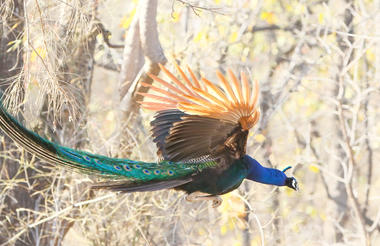
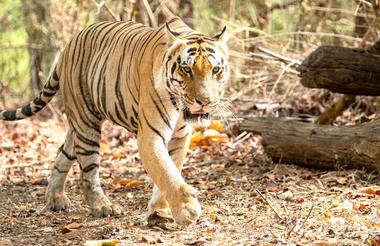
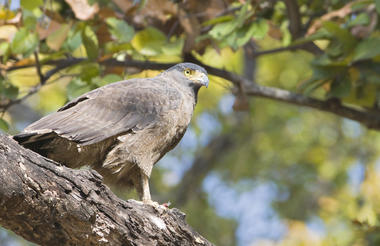
Kanha - one of India's largest national parks and one of the most diverse in terms of habitats and is home to the highly endangered Swamp Deer nor Barasingha which was once down to only 70 animals
Today you can enjoy morning and afternoon game drives in Kanha National Park.
Kanha is not only famous for its Tiger sightings, but also for the highly endangered central Indian race of the Swamp Deer or Barasingha. Once down to less than 70, their population today is between 400-500 animals.
Other herbivores found here are Chital, Sambar and the Muntjac, which along with Wild Boar form the main prey base for Tiger. Parts of Kanha are good habitat for the Dhole or Indian Wild Dog. Birdwatching here is nonetheless a rewarding experience. Of the species to be seen in the Park are the Crested Hawk Eagle, Crested Serpent Eagle, Large Racquet-tailed Drongo, Paradise Flycatcher, Golden Oriole, several species of cuckoos, nightjars and owls. The grasslands are the habitat for birds like the Zitting Cisiticola, Jungle Prinias and Painted Partridge along with seed-eaters such as the various species of munia.
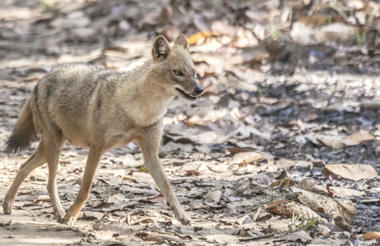
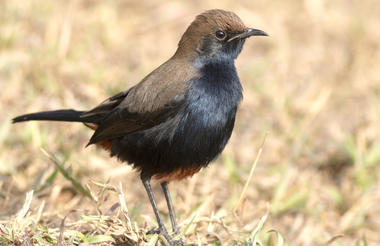
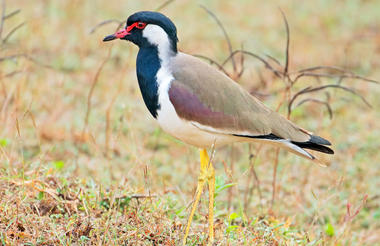
Singinawa Jungle Lodge - the lodge is very well known for its exceptional naturalists and guides who have a wealth of knowledge about Kanha and many are considered experts on a wide range of subjects. The lodge grounds are a haven for birdlife and visits by mammal species such as porcupines, and wild boar
You have a final morning game drive in Kanha National Park (circa 6 hours ) and then you can relax this afternoon before your travelling day tomorrow or choose from one of the other activities available such as a visit to a local village or a walking or bicycle tour



Village visits - visits from a lodge to a local village can be very rewarding as often it is their own home so you get a real insight into the lives of the local people without the invasive feeling of some organised tours
You leave Singinawa this morning and drive to Pench National Park which is 195kms.
Whilst Pench is one of the smaller National Parks it has a high density of prey species and an estimated 65 tigers. It has an appealing landscape of dry and moist deciduous forest and Teak is a major tree of the region. The vegetation is of undulating scrub lands and bamboo patches around hilly areas.
The park has a recorded 39 species of mammals and 210 species of migrant and resident birds.


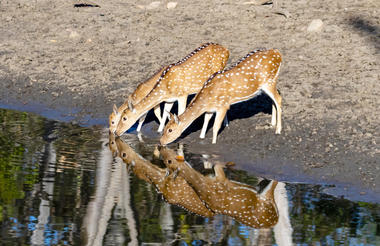
Pench National Park - the park was the setting for Rudyard Kipling's "The Jungle Book" and has a wealth of wildlife and a good density of tigers
Today you have the opportunity to visit Pench both on a morning and an afternoon drive with a return to the lodge for a leisurely lunch and an option of a rest in your cottage or relaxation around the pool.



Pench Tree Lodge - the tree houses at Pench tree Lodge give you a real sense of being in the wild with the canopy being full of exotic birdlife and langur monkeys






